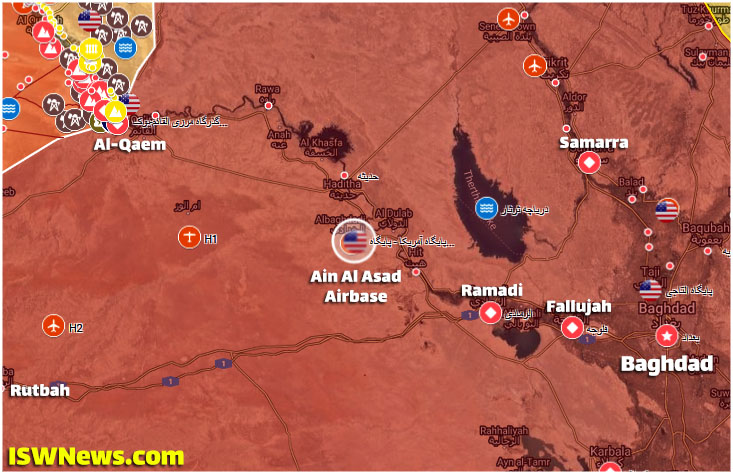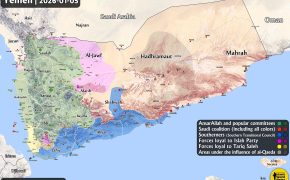Rocket, Missile Attack On US Positions At Ain Al Asad Air Base

The United States occupying forces’ positions at the Ain al-Asad base, located in Iraq’s Al Anbar governorate, were targeted in a rocket and missile attack by the Islamic Resistance in Iraq on the January 20.
In the early hours when the incident occurred, some media outlets, citing US sources, reported that the resistance forces used short-range ballistic missiles to target the Ain al-Asad base, and there were reports of injuries and casualties among US forces.
Several hours after this attack, the US Central Command (CENTCOM) also confirmed reports of a missile attack on Ain al-Asad airbase by issuing a statement. The statement said that around 18:30 (local time), several ballistic missiles and rockets were fired by Iran-backed militia groups towards Ain al-Asad airbase. Most of the missiles were intercepted by the base’s air defense systems, but some of them hit the military base. According to initial assessment, some US personnel suffered traumatic brain injuries and at least one Iraqi soldier was injured.
Therefore, given the confirmation of the missile attack, it can be speculated that the resistance forces used short-range ballistic missiles, including Al-Aqsa 1 and Sarem, which have recently been unveiled by the Iraqi resistance.
Read more:
Iraqi Islamic Resistance Unveils Al-Aqsa-1 Missile; US bases to be demolished!
Islamic Resistance Of Iraq Unveils New Missile, Sarem ballistic missile
This attack was carried out in a hybrid tactic by using rockets and ballistic missiles to yield better result. In this way, by firing a large number of rockets towards Ain al-Asad airbase, the base’s defense systems faced a large number of rockets, increasing the chances of short-range ballistic missiles hitting targets inside the base.
Based on available information, this attack is considered the second major strike on Ain Al Asad airbase in terms of volume and power of the fired projectiles after Iran’s missile attack on the base. Undoubtedly, these types of attacks are several stages higher and more powerful than routine daily attacks on US positions in the region and will greatly increase the casualties and damages.




Comment